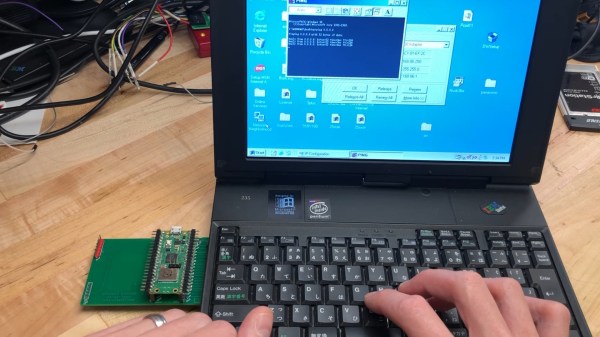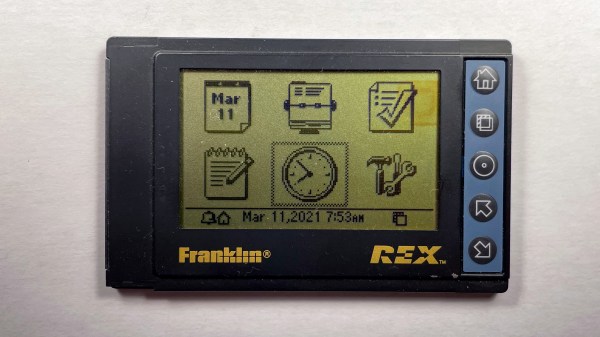There are two ways to recover data from an obsolete storage medium. One way is to pull out all the tools in the hacker’s kit — with logic analyzers, oscilloscopes, and bit-banged software in a desperate attempt to reverse engineer the original protocol. The other way is to have a really, really deep junk bin that just happens to contain exactly the right pieces that would have been used decades ago.
For recovering data from a 25-year-old PCMCIA memory card, [Dave] from Vintage Apparatus chose the latter method. But to be fair, characterizing the stash of gear he had to select from as a “junk bin” is pretty insulting. It’s more like a museum of retro technology, which just so happened to hold Toshiba Libretto, a subnotebook computer hailing from the late 1990s. The machine sports a pair of PCMCIA slots and was just the thing to read the data from the old 32 MB SanDisk flash card, which once lived in a backpack-mounted GPS system for surveyors.
If this hack sounds as easy as plugging things into an old computer, you’d be right — if you just happen to have a stack of floppies containing the Windows 98 drivers for said things. So [Dave]’s task became a game of finding the right combination of cards that already had the drivers installed and would provide the connectivity needed to get the data off the flash card. Between a suspiciously crunchy-sounding floppy drive and an Ethernet card dongle badly in need of some contact cleaner, cobbling together the right hardware was a bit of a chore. After that, a lot of the hack was [Dave] just remembering how we used to do things back in the day, with the eventual solution being transferring over the files to an FTP server on a Raspberry Pi.
The video below tells the whole saga, but the real treat might just be the Vintage Apparatus collection of gear. Incidentally, we really like [Dave]’s idea for storing associated bits and bobs.
Continue reading “PCMCIA Flash Card Gives Up Its Secrets Thanks To Retro Gear”














